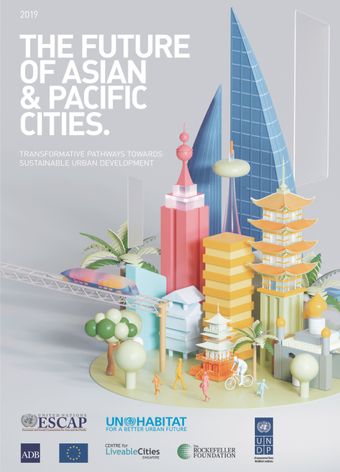Development pathways for a sustainable urban future

- Author: United Nations
- Main Title: The Future of Asian & Pacific Cities , pp 156-165
- Publication Date: October 2019
- DOI: https://doi.org/10.18356/4e9abf06-en
- Language: English
An Asia-Pacific mayor faces a dire forecast of a cyclone set to make landfall in her city. Per the city’s resilience strategy, the local government established a central operations centre with monitoring and communication capacity to reach citizens in the event of an emergency. Fortunately, most of the low-lying areas that historically flooded in the event of cyclones were rezoned following the city’s last comprehensive plan, and they are not densely settled. One coastal area is a concern, however. Years ago, a private real estate developer wanted to construct a residential complex near a popular beach. After much negotiation, the developer agreed to setbacks as established by the city from the high-tide mark projected for 2100 in an effort to future-proof ahead of sea level rise. Still, the risk of near-term flooding was great enough that the city opted to build a seawall in some areas and plant a natural defence barrier of water-absorbing mangrove in other areas. To pay for this expensive infrastructure investment, the city initiated a value capture scheme and charged the owners of the beachfront property, who saw their property values increase once the coastal protections were completed, as the design also included new waterfront public space.
-
From This Site
/content/books/9789210045667c009dcterms_title,dcterms_subject,pub_keyword-contentType:Journal -contentType:Contributor -contentType:Concept -contentType:Institution105

